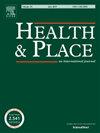日本城市和农村的邻里步行与随后的健康和福祉:一项结果广泛的纵向研究
IF 4.1
2区 医学
Q1 PUBLIC, ENVIRONMENTAL & OCCUPATIONAL HEALTH
引用次数: 0
摘要
步行能力对老年人健康影响显著;然而,其与不同地理背景下各种结果的关系尚不清楚。考虑到城乡差异,本研究调查了日本老年人的社区步行能力与健康和福祉之间的关系。方法数据来自日本老年学评估研究,这是一项针对≥65岁日本成年人的全国性队列研究,分三波(2013年、2016年和2019年)。本研究包括27,354名基于调查的样本和40,111名基于长期护理保险的样本。社区可步行性的评估采用了由人口密度、到零售和公园区域的距离以及道路密度得出的综合指数。利用城市化分层的多水平回归模型分析了7个领域的42个结果。采用Bonferroni校正(α = 0.0012)。结果在城市环境中,较高的步行适宜性与增加的步行时间显著相关。相反,在农村地区,更高的可步行性带来了不同的结果;它与爱好/运动团体和郊游的参与增加显著相关,但也与功能残疾风险增加(水平≥2)、久坐行为增加和互惠规范降低相关。可步行性与步行时间无显著相关。结论可持续性对城市和农村地区的健康和福祉有不同的影响,因此需要采取因地制宜的策略。虽然城市的努力可以集中在行人基础设施上,但有效的农村战略可能包括解决交通、社会联系和活动促进的综合方法。本文章由计算机程序翻译,如有差异,请以英文原文为准。
Neighborhood walkability and subsequent health and well-being in urban and rural Japan: An outcome-wide longitudinal study
Background
Walkability notably affects the health of older adults; however, its relationship with various outcomes in different geographical contexts remains unclear. Considering urban–rural differences, this study examined associations between neighborhood walkability and the health and well-being of older adults in Japan.
Methods
Data were obtained from the Japan Gerontological Evaluation Study, a nationwide cohort study of Japanese adults aged ≥65 years, across three waves (2013, 2016, and 2019). This study included 27,354 participants in the survey-based sample and 40,111 participants in the long-term care insurance-based sample. Neighborhood walkability was assessed using a composite index derived from population density, distance to retail and park areas, and road density. Forty-two outcomes across seven domains were analyzed using multilevel regression models stratified by urbanicity. Bonferroni correction was applied (α = 0.0012).
Results
In urban settings, higher walkability was significantly associated with increased walking time. Conversely, in rural areas, higher walkability showed mixed results; it was significantly associated with increased participation in hobby/sports groups and outings, but also with increased risk of functional disability (level ≥2), increased sedentary behavior, and decreased norms of reciprocity. Walkability was not significantly associated with walking time.
Conclusions
Walkability can have different effects on health and well-being in urban and rural areas, highlighting the need for location-specific strategies. While urban efforts could focus on pedestrian infrastructure, effective rural strategies would likely involve an integrated approach that addresses transportation, social connectivity, and activity promotion.
求助全文
通过发布文献求助,成功后即可免费获取论文全文。
去求助
来源期刊

Health & Place
PUBLIC, ENVIRONMENTAL & OCCUPATIONAL HEALTH-
CiteScore
7.70
自引率
6.20%
发文量
176
审稿时长
29 days
期刊介绍:
he journal is an interdisciplinary journal dedicated to the study of all aspects of health and health care in which place or location matters.
 求助内容:
求助内容: 应助结果提醒方式:
应助结果提醒方式:


